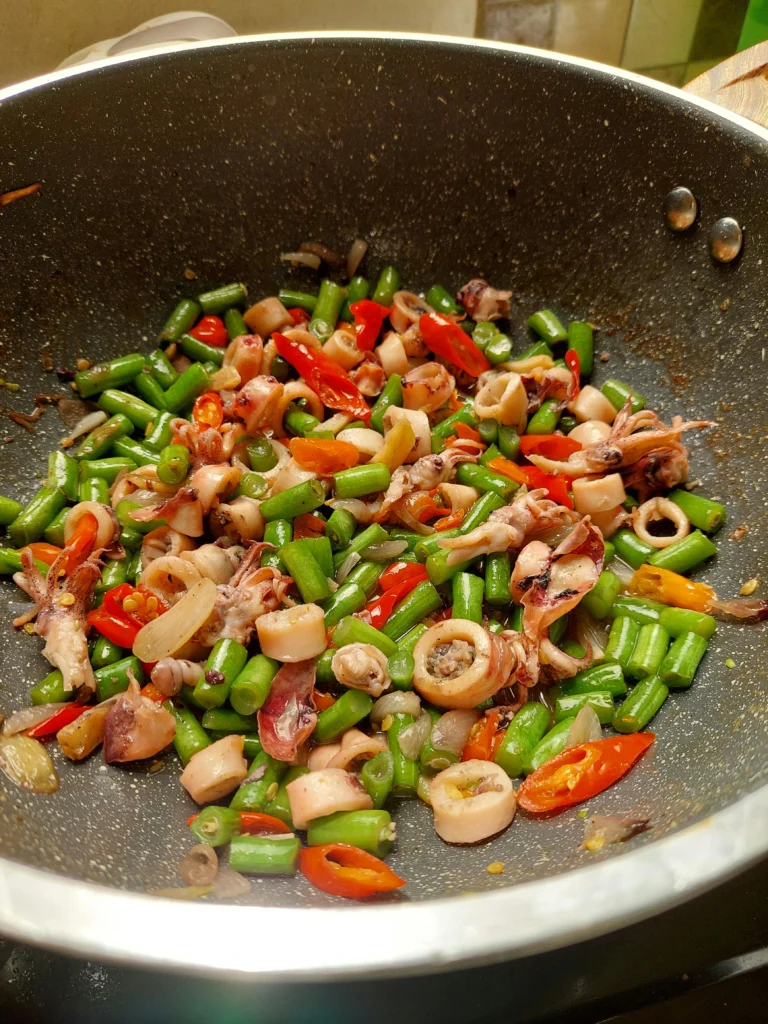Here’s your guide to a flexitarian diet for beginners in South Africa.
When I first heard about the flexitarian diet, I thought it sounded too fancy for everyday life in South Africa.
But once I dug deeper, I realised it’s one of the most practical, balanced, and affordable ways of eating.
I want to share what the flexitarian diet looks like for beginners in South Africa.
I’ll explain how it fits our local lifestyle.
Plus, I’ll include a 7-day meal plan using foods from Pick n Pay, Checkers, or your nearest spaza shop.
So, let’s unpack it step by step.
What is a Flexitarian Diet?
The word “flexitarian” comes from “flexible” and “vegetarian.”
It primarily means consuming a variety of plants, including fruits, vegetables, legumes, and whole grains. You can also enjoy some animal products, such as chicken, fish, eggs, or dairy, but in moderation.
Unlike vegetarian or vegan diets, it doesn’t require you to eliminate meat.
It suggests making plant-based foods your primary focus and using meat as a side.
That flexibility is precisely why I love it. It’s not about strict rules or labels—it’s about progress, not perfection.
Why the Flexitarian Diet Works in South Africa
As South Africans, food is a vital part of our culture.
We braai, we share pap and chakalaka, we make bunny chow and bobotie. Cutting out meat completely can feel daunting.
But here’s the beauty of the flexitarian lifestyle: you don’t have to.
Instead, you shift the balance. For example:
- Instead of pap with a significant portion of wors, you have pap with beans and spinach, and maybe just a little wors.
- Instead of chicken every night, you enjoy lentil curry twice a week and fish another night.
Here’s why it works so well for us:
Affordable Proteins
They include beans, samp, lentils, split peas, and soya. They are budget-friendly and readily available.
Health Benefits
Research indicates that flexitarian diets may lower the chances of getting heart disease, type 2 diabetes, and high blood pressure. And with lifestyle diseases being so common here, that matters.
Cultural Fit
Our national dietary guidelines already recommend that we eat “dry beans, peas, lentils, and soya regularly.” So, flexitarian eating isn’t new—it’s just giving an old wisdom a modern spin.
Beginner Steps for Flexitarian Diet: From Meat Every Day to Mostly Plants
When I started, I didn’t go “all in” overnight. I began with two meat-free days a week. After a while, that turned into three or four.
Now, most of my meals are plant-based, and when I do eat meat, I savour it.
Here are my favourite starter tips for beginners in South Africa:
- Pick your flex days – Start with “Meat-Free Mondays” and maybe a midweek lentil curry night.
- Stock your pantry – Keep basics like samp, beans, canned chickpeas, tinned tomatoes, oats, peanut butter, and brown rice.
- Make swaps gradually – Replace half the mince in your bobotie with lentils. Or add kidney beans to your stew.
- Think of meat as a garnish – Instead of meat being the main event, let veggies or legumes shine.
It’s really about small, consistent shifts.
Smart Shopping in South Africa (on a Budget)
People often ask me: “Isn’t eating healthier expensive?”
My answer is no—it’s about how you shop.
Here’s what helps me save:
- Buy in bulk – Dry beans, lentils, and samp are cheaper per kilo than meat.
- Frozen is your friend – Frozen spinach, mixed veg, or peas are nutritious and usually cost less than fresh.
- Look for the Heart Mark – Products with the Heart & Stroke Foundation’s Heart Mark are healthier picks for salt, sugar, and fat.
- Seasonal produce – Buy what’s in season—think pumpkin in winter, mangoes in summer.
When you shift towards beans, veg, and grains, your grocery bill often drops.
7-Day Flexitarian Starter Plan (South African Foods)
To make this practical, here’s a simple 7-day meal plan to help you get started.
Day 1
- Breakfast: Oats with banana and peanut butter.
- Lunch: Samp and bean salad with tomato & onion relish.
- Dinner: Lentil bobotie with side salad.
Day 2
- Breakfast: Maas with fruit and a sprinkle of muesli.
- Lunch: Whole-wheat wrap with grilled veggies and chickpeas.
- Dinner: Grilled chicken breast, pap, and spinach.
Day 3
- Breakfast: Avocado toast on brown bread.
- Lunch: chakalaka with beans and brown rice.
- Dinner: Grilled pilchards with butternut mash and green beans
Day 4
- Breakfast: Smoothie with spinach, apple, and soya milk
- Lunch: Lentil curry with roti
- Dinner: Veggie stir-fry with egg and noodles.
Day 5
- Breakfast: Scrambled eggs with tomatoes on toast.
- Lunch: Chickpea salad with cucumber, onion, and lemon.
- Dinner: Beef stew (small portion) with samp and beans.
Day 6
- Breakfast: Peanut butter sandwich with fruit.
- Lunch: Veggie burger patty with sweet potato chips.
- Dinner: Roast chicken drumstick, pumpkin, and steamed cabbage.
Day 7
- Breakfast: Overnight oats with berries.
- Lunch: Falafel with tahini and salad.
- Dinner: Veggie chakalaka stew with pap.
This plan mixes popular SA favourites with plant-based twists. You’ll still find some meat and fish options available as well.
Protein & Nutrient Basics in a Flexitarian Diet for Beginners in South Africa
When we discuss reducing meat consumption, the first question that arises is: “Will I get enough protein?”
Trust me—you will.
Here’s how I cover my nutrient bases:
- Protein: Beans, lentils, chickpeas, Tofu, eggs, fish, yoghurt.
- Iron: Spinach, lentils, fortified cereals (add vitamin C-rich fruit to help with absorption).
- B12: Found in eggs, dairy, fish—or via supplements if needed.
- Omega-3: Flaxseeds, chia seeds, walnuts, pilchards, and sardines.
If you’re unsure about your nutritional needs, consult a registered dietitian for personalised guidance. You can find one through ADSA.
Flexitarian vs Vegetarian vs Vegan
I’m often asked, “So, are you a vegetarian?”
Nope—I’m flexitarian.
Here’s the difference:
- Vegetarian – No meat, but may eat dairy and eggs.
- Vegan – There are no animal products at all, not even meat, dairy, eggs, or honey.
- Flexitarian – Mostly plants, but some animal foods in moderation.
That’s why flexitarian eating is an excellent option for beginners. You don’t have to “give up” anything; just make some adjustments.
FAQs
Is it possible to lose weight on the flexitarian diet?
Sure! Cutting back on processed foods and enjoying more whole, plant-based meals can help.
Is pap Ok on a flexitarian diet?
Absolutely! Pair it with beans, chakalaka, or spinach for a balanced meal.
What about kids – can they eat a flexitarian diet?
Just ensure they get enough protein and iron-rich foods.
How many meat meals should beginners aim for?
Try starting with two meat-free days a week and then gradually increase the number of days.
Resources for Going Flexitarian in South Africa as a Beginner
If you’d like to dig deeper, here are some resources I found super helpful:
- South Africa’s Food-Based Dietary Guidelines (FAO summary)
- Heart & Stroke Foundation SA – Heart Mark
- ADSA – Find a registered dietitian
- Healthline: Flexitarian Diet – Beginner’s Guide
- BBC Good Food: What is a Flexitarian Diet?
Conclusion
Try the flexitarian diet for beginners in South Africa. It allows you to enjoy more plant-based foods in your meals while still incorporating meat.
It’s an excellent choice for beginners in South Africa. It’s flexible, affordable, culturally adaptable, and good for your health.
Since changing my eating habits, I feel more energetic. My grocery bill has dropped, and my meals are now more colourful and satisfying.
So, why give it a try?
Start with two meat-free days this week. Stock up on beans and lentils.
Enjoy the journey! Eating well should never feel like a punishment.


